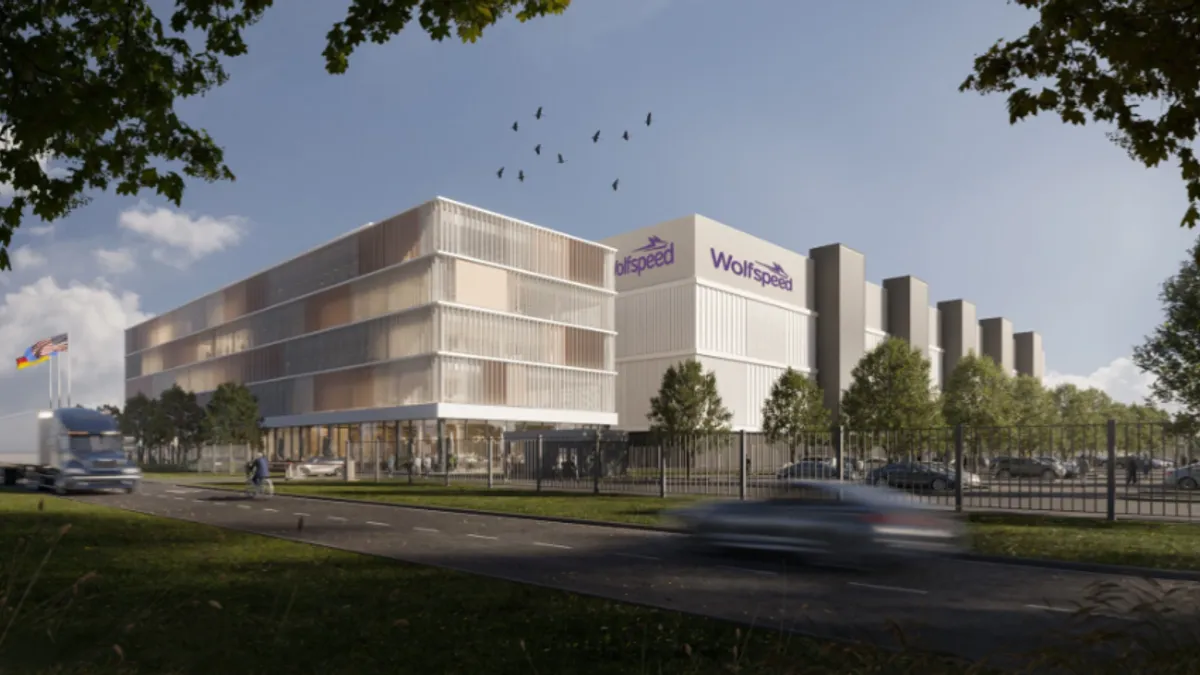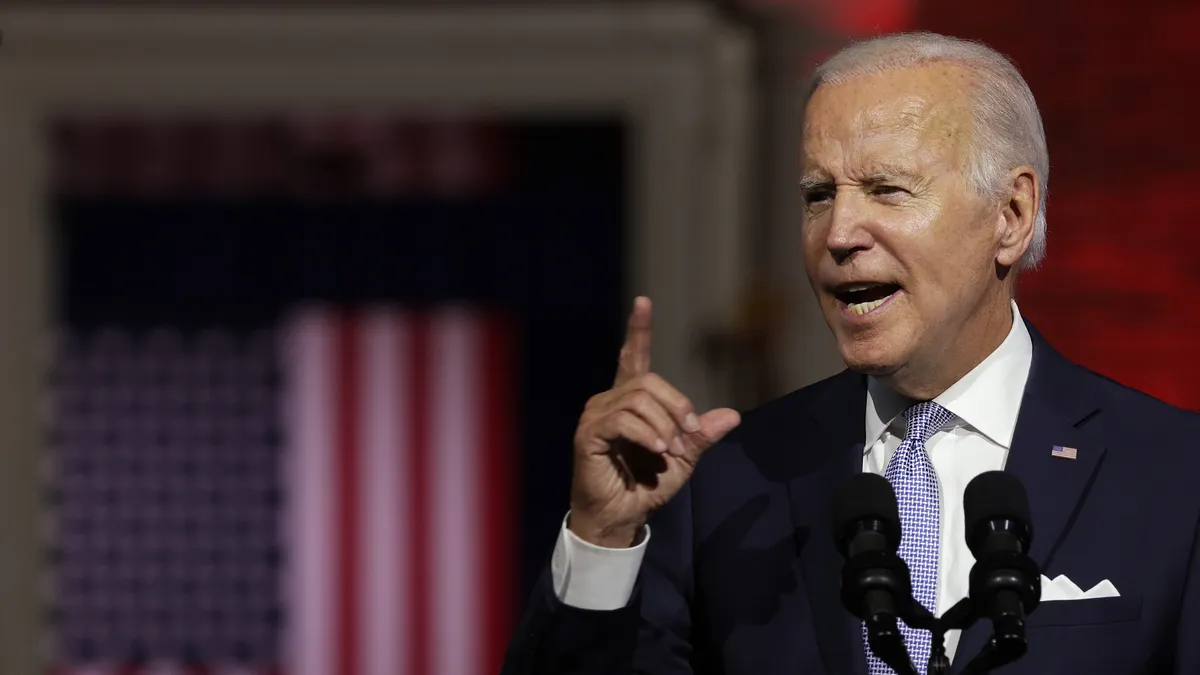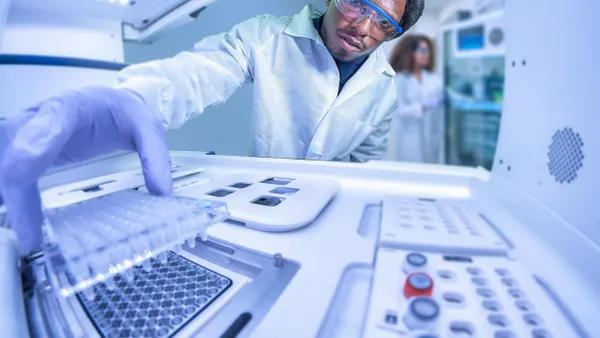Dive Brief:
- Wolfspeed plans to lay off 20% of its workforce, the chipmaker’s president and CEO Gregg Lowe announced on its Q1 earnings call on Nov. 6.
- The company will close multiple facilities, including one previously announced in North Carolina, as well as undergo headcount restructuring initiatives, in an effort to generate annual cash savings of approximately $200 million, Lowe said.
- The decision is partially due to the slower growth of electric vehicle adoption and continued weakness in the industrial and energy sectors, the CEO said on the call.
Dive Insight:
Wolfspeed will begin its restructuring plan by closing its 150-millimeter device fab in Durham, North Carolina, over the next nine to 12 months. The chipmaker said it's currently working with customers to finalize the transition timeframe.
Second, the company will shutter its production facility in Farmers Branch, Texas, and “indefinitely” suspend construction plans for a device fab in Saarland, Germany, Lowe said.
Most of the layoffs have already occurred, Lowe said, and the rest are supposed to be complete by the end of the year, yet the specific locations weren’t disclosed in the call. The company employs 5,013 workers as of June 30, according to its annual securities filing.
Wolfspeed will face restructuring charges of approximately $400 million to $450 million over the next several quarters, including $87 million incurred this quarter, CFO Neill Reynolds said on the call.
Lastly, Wolfspeed is further reducing its fiscal 2025 capital expense guidance range by an additional $100 million to a new range of $1.1 billion to $1.3 billion, excluding federal incentives, Lowe said on the call.
The cost cutting comes just days after Wolfspeed received $750 million in CHIPS and Science Act funding on Oct. 18, which Wolfspeed expects to receive in multiple disbursements over the next several years, mainly tied to operational milestones at the John Palmour Manufacturing Center in North Carolina and its Mohawk Valley facility in New York.
The first disbursement is expected for mid-calendar year 2025 and will be roughly 20% to 25% of the total grant size, according to Reynolds.
The company cited the struggling EV market for its short-term volatility.
“As with any disruptive technology, we are seeing EV customers revise their launch timelines as the market works through this transition period, Lowe said. “This push-out in anticipated EV demand does not reflect diminished confidence in the long-term demand for the adoption of EVs.”
The industrial and energy sectors also saw continued softness, primarily due to broader macroeconomic pressures, including higher interest rates and the rising cost of capital, which have delayed investment cycles and contributed to a slower recovery for this sector, Lowe noted.












